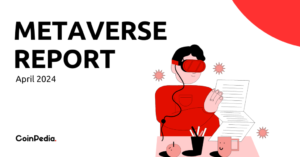

The post Forbes Lists 20 Zombie Tokens With A Market Value Of More Than $1B appeared first on Coinpedia Fintech News
Forbes listed 20 zombie coins, calling them good-for-nothing blockchains — They are unproven and have little utility other than speculative crypto trading. Among these are XRP, ADA, BCH, LTC, ICP, ETC, XLM, STX, KAS, THETA, FTM, XMR, AR, ALGO, FLOW, EGLD, BSV, MINA, XTZ, EOS. Despite high valuations, these tokens face questions about real-world adoption. …

The post Forbes Lists 20 Zombie Tokens With A Market Value Of More Than $1B appeared first on Coinpedia Fintech News
Forbes listed 20 zombie coins, calling them good-for-nothing blockchains — They are unproven and have little utility other than speculative crypto trading. Among these are XRP, ADA, BCH, LTC, ICP, ETC, XLM, STX, KAS, THETA, FTM, XMR, AR, ALGO, FLOW, EGLD, BSV, MINA, XTZ, EOS. Despite high valuations, these tokens face questions about real-world adoption. Are they truly alive?
Let’s uncover the truth!
Crypto Zombies on Rise
Forbes’ comprehensive report highlighted 20 “zombie blockchains” within the cryptocurrency market, including Ripple’s XRP and Ethereum Classic. Despite their high market valuations, these cryptocurrencies demonstrate minimal real-world utility and user adoption.
To everyone’s shock, Forbes labeled Ripple Labs, the firm behind XRP, as a significant crypto zombie. Despite XRP’s daily trading volume of approximately $2 billion, Forbes claims that the token’s main function is “speculative” and lacks substantial utility.
Notably, Forbes has reported that 50 blockchains, excluding Bitcoin (BTC) and Ethereum (ETH), are valued at over $1 billion each, with at least 20 termed as “functional zombies.” These 20 blockchains, with “limited user bases,” hold a collective market value of $116 billion.
Moving on to the detailed breakdown, they highlighted bigger projects like Ethereum Classic (ETC), Tezos, and Algorand, among others. Despite their high market capitalizations, their fee earnings raise doubts about their utility. For instance, ETC’s fee generation of less than $41,000 in 2023 contrasts with its $4.6 billion market value.
Tezos, having raised $230 million in a 2017 ICO, now holds a $1.2 billion market cap, but its fee earnings for 2023 were only $177,653. Algorand, once touted as an “Ethereum killer,” faces similar challenges, with blockchain transaction fees totaling just $63,000 in 2023, despite a $2 billion market cap and $500 million treasury.
Analyzing Zombie Blockchains
The term “zombie blockchains” characterizes these projects, which continue to operate and trade without evidence of fulfilling practical purposes. Among the cryptocurrencies scrutinized, Ripple’s XRP stands out, initially positioned as a challenger to the SWIFT banking network for international transfers but struggling to realize its ambitions.
Interestingly, Forbes’ analysis raises doubts about the widening gap between market valuation and practical approach within the crypto space. It also examines emerging contenders labeled as “Ethereum killers,” such as Tezos and Cardano, which face challenges in achieving widespread adoption despite their technological advancements and substantial valuations.
However, operating without regulatory oversight or strong governance modules puts these cryptocurrencies at risk, with Ethereum Classic’s trading activity after security breaches serving as a cautionary example.
Forbes flagged these cryptocurrencies as “zombies” due to a gap between their high valuations and low real-world use. Though it may seem harsh for growing projects like XRP and Cardano, they might struggle with utility but others may have strong community support.

